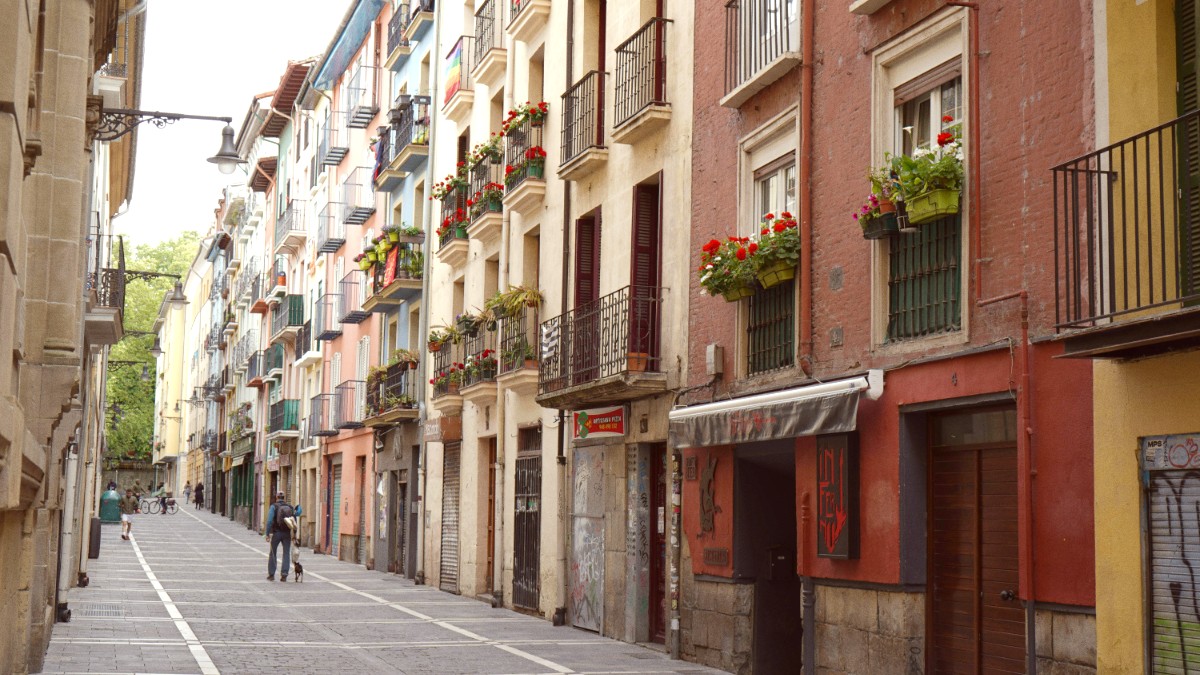
Aragon Basque Country And Navarra, Spain
These are the must-visit sites that define Pamplona's character and history, offering a window into its past and present.
Each landmark holds centuries of stories within its walls and structures, inviting exploration.
Outside of San Fermín, Calle Estafeta is a normal, bustling street.
This is the famous street for the Running of the Bulls (July 6-14).
Part of the route from Santo Domingo corrals to the bullring.
Outside the festival, it is a bustling street with shops and Pintxo bars.
Notice plaques embedded in walls commemorating past bull run events.
Always open and free to walk.
Pamplona has several museums and cultural venues. Gain a understanding of its history and art.
Journey through Navarra's history and art. Housed in a 16th-century hospital building. Archaeological finds, Roman mosaics, medieval frescoes.
Hours vary; check official website. Small entry fee, often free on Saturday afternoons and Sundays.
Modern science center with engaging astronomical shows and exhibitions. Educational and entertaining, especially for families.
Check their schedule for show times and special events. Entry fee for shows and exhibitions.
The Pamplona Bullring houses a small museum on the history of San Fermín festival and bullfighting. Check for guided tours or museum hours outside July.
Dedicated to Basque sculptor Jorge Oteiza. Extensive collection of experimental and abstract works. Located just outside Pamplona; check website for hours.
Site of San Fermín bullfights, with a museum on festival history. Access usually limited during July.
Showcases abstract works of Basque sculptor Jorge Oteiza. Located in Alzuza, a short trip from Pamplona.
A historic theater offering a varied program of plays, concerts, and dance performances throughout the year.
A modern architectural landmark, built on the former site of the Citadel's outer defenses. It cultural events.
Pamplona’s historical depth extends beyond its main landmarks, unveiling centuries of stories and traditions.
These sites connect visitors directly to the city's rich past, from its religious foundations to its role on the Camino de Santiago.
One of Pamplona's oldest and most historically significant churches. Originally built as a fortress-church.
Pamplona is a very important stop on the French Way (Camino Francés).
A modern architectural landmark contrasting with ancient fortifications. Constructed on former Citadel defenses.
Beyond the major sites, many smaller streets and squares in the Old Town hold historical significance and charm.
Pamplona is known for its extensive green spaces, offering peaceful escapes within the urban environment.
Large, star-shaped fortress grounds transformed into a beautiful public park. Vast lawns, tree-lined paths, outdoor sculptures.
A tranquil Japanese garden symbolizing Pamplona's sister city relationship with Yamaguchi, Japan. Features a pond, waterfall, tea house.
Pamplona's oldest and most emblematic park, designed in a classic French style. Formal gardens, statues, and a small deer park.
An extensive linear park system along the Arga River. A network of well-maintained walking, running, and cycling paths.
Pamplona has numerous smaller parks and tree-lined avenues, offering pockets of tranquility.
These parks are popular spots for locals to relax, jog, have picnics, and enjoy outdoor recreation.
The green corridors deliver a refreshing escape from the urban core, accessible all day and free.
Many areas within Pamplona's parks are ideal for leisurely picnics amidst nature.
The Arga River offers a picturesque backdrop to the city, with opportunities for riverside strolls and photography.
Pamplona's parks serve as community hubs, drawing residents for relaxation, exercise, and social gatherings.
Bring comfortable walking shoes to explore the walls and parks.
For detailed information on hours or special events, consult official websites or local tourism offices.
Beyond the well-known sights, Pamplona holds quieter spots and unique perspectives for those willing to explore.
This picturesque viewpoint sits near the city walls, offering stunning vistas over the Arga River and surrounding landscape.
Centrally located on Plaza Consistorial, its elaborate Baroque façade is often overlooked.
A traditional covered market. Exploring its stalls delivers an authentic glimpse into local life.
A sensory experience that goes beyond typical tourist stops.
Parts of the city walls less frequented than the main sections near the Citadel.
Look for access points near the less prominent gates.
Venture into residential areas beyond the immediate city center, like Iturrama or San Juan.
These areas provide a more authentic local living experience.
Allow yourself to wander beyond the main tourist routes to stumble upon unexpected sights.
A friendly chat with a local might reveal a lesser-known spot or story.
Visit popular spots during off-peak hours for a more serene experience.